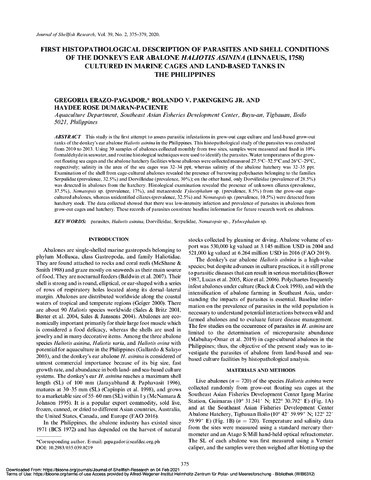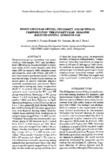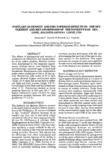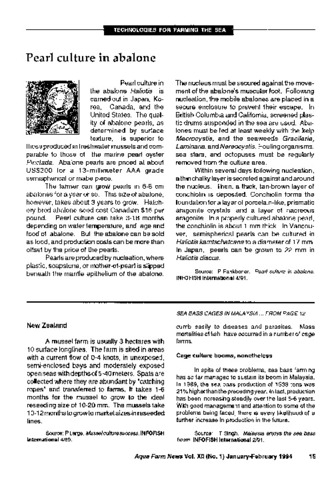First histopathological description of parasites and shell conditions of the donkey's ear abalone Haliotis asinina (Linnaeus, 1758) cultured in marine cages and land-based tanks in the Philippines

Lihat/
Request this document
Tarikh
2020-08-26Page views
336Metadata
Lihat penerbitan penuhCited times in Scopus
Share
abstrak
This study is the first attempt to assess parasitic infestations in grow-out cage culture and land-based grow-out tanks of the donkey's ear abalone Haliotis asinina in the Philippines. This histopathological study of the parasites was conducted from 2010 to 2013. Using 30 samples of abalones collected monthly from two sites, samples were measured and fixed in 10% formaldehyde in seawater, and routine histological techniques were used to identify the parasites. Water temperatures of the grow-out floating sea cages and the abalone hatchery facilities whose abalones were collected measured 27.5°C–32.5°C and 26°C–29°C, respectively; salinity in the area of the sea cages was 32–34 ppt, whereas salinity of the abalone hatchery was 32–35 ppt. Examination of the shell from cage-cultured abalones revealed the presence of burrowing polychaetes belonging to the families Serpulidae (prevalence, 32.5%) and Dorvilleidae (prevalence, 30%); on the other hand, only Dorvilleidae (prevalence of 28.5%) was detected in abalones from the hatchery. Histological examination revealed the presence of unknown ciliates (prevalence, 37.5%), Nematopsis sp. (prevalence, 17%), and metacestode Tylocephalum sp. (prevalence, 8.5%) from the grow-out cage-cultured abalones, whereas unidentified ciliates (prevalence, 32.5%) and Nematopsis sp. (prevalence, 10.5%) were detected from hatchery stock. The data collected showed that there was low-intensity infection and prevalence of parasites in abalones from grow-out cages and hatchery. These records of parasites constitute baseline information for future research work on abalones.
Suggested Citation
Erazo-Pagador, G., Pakingking, R. V., Jr., & Dumaran-Paciente, H. R. (2020). First histopathological description of parasites and shell conditions of the donkey's ear abalone Haliotis asinina (Linnaeus, 1758) cultured in marine cages and land-based tanks in the Philippines. Journal of Shellfish Research , 39(2), 375-379. https://doi.org/10.2983/035.039.0219
Subjek
Taxonomic term
Koleksi
- AQD Journal Articles [1229]
Related items
Showing items related by title, author, creator and subject.
-
Spontaneous spawning, fecundity and spawning periodicity in the donkey's ear abalone Haliotis asinina Linnaeus 1758
Fermin, Armando C.; Gapasin, Rolando S.J.; Teruel, Myrna B. (Phuket Marine Biological Center; Phuket Marine Biological Center Special Publication 21(1), 2000)Spontaneous group spawning was monitored in wild-caught (WC) and hatchery-bred (HB) abalone broodstock (Haliotis asinina) held in duplicate tanks at 1:3 (male: female) ratio from June 1997 to January 1999. Abalone ... -
Postlarvae density and photoperiod effects on the settlement and metamorphosis of the donkey's ear abalone, Haliotis asinina Linne, 1758
Fermin, Armando C.; Gapasin, Rolando S. J. (Phuket Marine Biological Center, 2000)The effects of photoperiod and density of postlarvae on settlement and metamorphosis of the native abalone, Haliotis asinina were determined in two separate experiments. Abalone larvae were hatched from spontaneously ... -
Pearl culture in abalone
Southeast Asian Fisheries Development Center, Aquaculture Department (Aquaculture Department, Southeast Asian Fisheries Development Center, 1994)The article discusses pearl culture in abalone which is commonly carried out in Japan, Korea, Canada, and the United States. Abalone pearl formation is also discussed.





